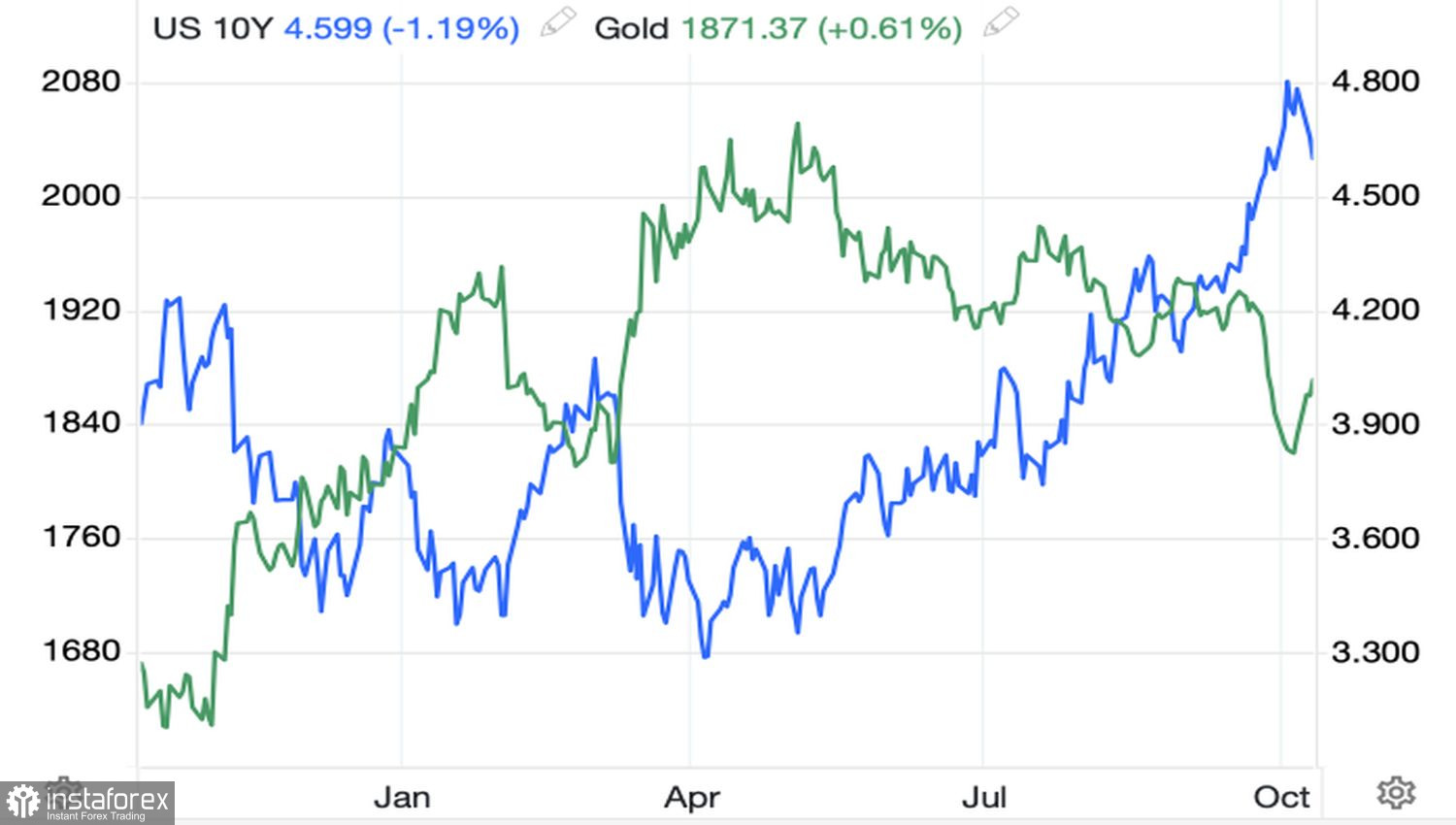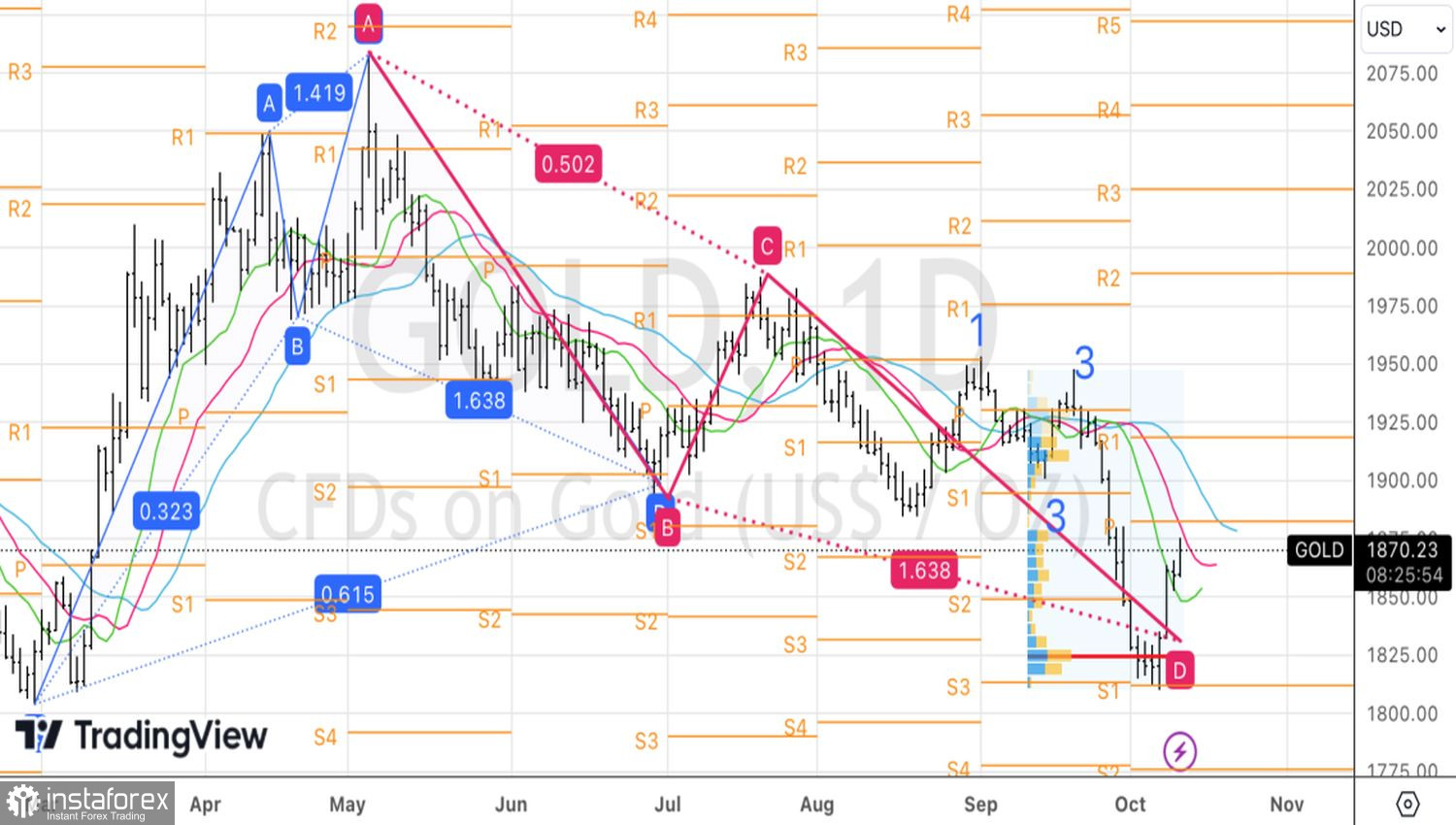For some, war, for others, their motherland. The most massive terrorist attack on Israel in decades turned gold from an ugly duckling into a beautiful swan. During periods of geopolitical turmoil, investors prefer to hold precious metals in their portfolios. Additionally, the risks of a new inflation surge amid rising oil prices are supporting XAU/USD. In such conditions, the Federal Reserve and other central banks may raise interest rates even further and push economies into a recession.
Before the armed conflict in the Middle East, gold was in a tough spot. The U.S. dollar strengthened for 12 consecutive weeks. The yield on 10-year Treasury bonds reached its highest level since 2007. Should we have been surprised by the decline in the precious metal's price? The headwind was very strong.
Dynamics of gold and Treasury bond yields

Changes occurred due to the Hamas terrorist attacks on Israel. Jerusalem is determined to avenge the bloodiest slaughter in decades and is sending troops into Gaza. It accuses Tehran of aiding terrorists. If the United States provides evidence, Iran will face new sanctions. Additionally, there's a risk of a direct confrontation between Israel and Iran. In a critical scenario, another world war may begin. How could one not buy gold under these circumstances? Primarily, the sharp rise in demand for U.S. Treasury bonds, leading to their yield reduction, contributes to the increase in gold quotes.
It's worth noting that the Federal Reserve has also played a role in this process. Recently, FOMC officials have been unanimously stating that there's no need to restart the monetary policy tightening cycle. They argue that the high rates of the U.S. debt market are doing the central bank's "dirty work." Some Federal Reserve representatives even declare the end of monetary restriction. The bond market is responding with a reduction in yield, allowing gold to stage a counterattack.
The fate of gold in the future will depend on both the developments in the Middle East and the news from the United States. In September, the Fed meeting was perceived by investors as "hawkish." However, if the minutes of that meeting show any doubts among FOMC officials about the need to raise the federal funds rate to 5.75%, the yield on Treasury bonds may fall even further, and gold may rise even higher.

Equally important for XAU/USD will be the release of data on U.S. producer and consumer prices for September. If inflation slows down further due to the depletion of U.S. household savings and a slowdown in average wage growth, this will immediately affect the U.S. debt market and the precious metal.
From a technical perspective, after reaching the 161.8% target in the AB=CD pattern, a natural pullback followed. This allowed us to form long positions from the $1833 per ounce level. However, it's not advisable to go overboard with buying. On the daily chart of gold, the transformation of the Shark pattern into a 5-0 pattern is taking place. Look for rebounds from resistance levels at $1881, $1894, and $1915 for selling.
 English
English 
 Русский
Русский Bahasa Indonesia
Bahasa Indonesia Bahasa Malay
Bahasa Malay ไทย
ไทย Español
Español Deutsch
Deutsch Български
Български Français
Français Tiếng Việt
Tiếng Việt 中文
中文 বাংলা
বাংলা हिन्दी
हिन्दी Čeština
Čeština Українська
Українська Română
Română

